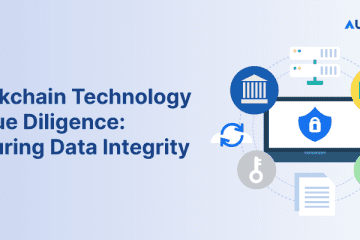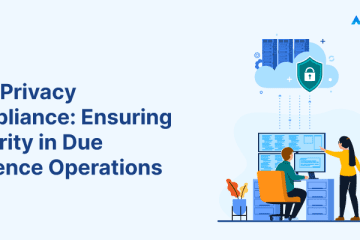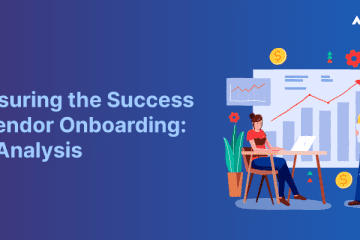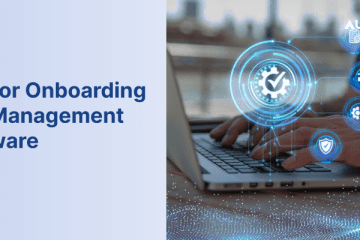Introduction
Vendor Onboarding refers to the process by which businesses in India qualify, onboard, and integrate new vendors into their existing supply chain. It’s a critical component of supply chain management that ensures only reliable and compliant vendors are added, minimizing risks and fostering strong business relationships.
Importance in the Indian Market
In the rapidly growing Indian market, efficient vendor onboarding is crucial for maintaining competitive advantage, ensuring compliance with stringent regulations, and achieving operational excellence. The diverse and complex regulatory landscape in India makes thorough vendor verification and due diligence a necessity for businesses across sectors.

Step 1: Identifying Potential Vendors
Market Research
The foundation of a successful vendor onboarding process is identifying the right vendors. This begins with comprehensive market research tailored to your specific needs. In India, where markets vary significantly across regions, understanding local market dynamics is crucial. Businesses should leverage both digital and traditional research methods, including industry reports, trade fairs, and digital marketplaces. Networking with industry peers and consulting with trade associations can also provide valuable insights into potential vendors.
RFI (Request for Information) Process
Once potential vendors are identified, the next step is to gather more detailed information through an RFI process. This involves sending out a request for information to understand the vendors’ capabilities, standards, and compliance with your requirements. The RFI should include questions about the vendors’ business stability, financial health, product or service quality, and compliance with Indian regulations and standards. It’s a non-binding inquiry that helps narrow down the list of potential vendors by assessing their ability to meet your needs.
Step 2: Vendor Verification and Due Diligence
Vendor Verification Methods
Vendor verification in India involves several layers, including legal, financial, and operational assessments. Businesses can conduct background checks, review financial statements, and assess legal compliance with Indian laws and regulations. Third-party verification agencies play a critical role in this process, offering expertise in conducting thorough background checks and ensuring the potential vendor’s reliability and compliance.
Conducting Due Diligence
Due diligence goes beyond basic verification, providing a deep dive into the vendor’s operational history, market reputation, and risk factors. This includes evaluating the vendor’s past performance, client testimonials, and any legal disputes. Due diligence services in India often encompass a detailed review of the vendor’s financial health, including audits of their balance sheets, income statements, and cash flow statements, to assess their financial stability and risk factors.
Legal and Financial Assessments
Legal and financial assessments are crucial to understand the vendor’s compliance with Indian regulations, including tax laws, employment laws, and environmental standards. This step involves verifying the vendor’s GST registration, PAN details, and any other relevant certifications or licenses. Financial analytics play a significant role here, analyzing the vendor’s financial stability and growth prospects, which is vital for establishing a long-term partnership.
Risk Assessment and Compliance Checks
Risk assessment involves evaluating the potential risks associated with onboarding the vendor, including supply chain disruptions, non-compliance with industry standards, and cybersecurity risks. Automated vendor risk management solutions can help in continuously monitoring these factors. Compliance checks ensure that the vendor adheres to all relevant Indian and international regulations, including data protection laws, labor laws, and industry-specific standards.
Step 3: Vendor Onboarding Documentation
Once a vendor passes through the verification and due diligence phase, the next critical step is to ensure all necessary documentation is correctly completed and filed. This stage solidifies the legal and operational framework of the vendor relationship.
Required Documents and Contracts
The documentation required for vendor onboarding in India typically includes:
- Vendor Application Form: Collects basic information about the vendor, such as company details, contact information, and services offered.
- GST Registration Certificate: Mandatory for compliance with the Indian tax regime.
- PAN Card: For tax purposes and to verify the vendor’s legal existence.
- Bank Account Proof: To set up payment processes.
- Non-Disclosure Agreements (NDA): To protect proprietary information.
- Service Level Agreements (SLA): Outlines the expected service levels, deliverables, and responsibilities.
- Compliance Certificates: Ensuring the vendor meets specific industry standards and regulations.
- Due Diligence Report: Documenting the findings from the due diligence process.
Collecting these documents ensures legal compliance and sets clear expectations and responsibilities, laying a strong foundation for the vendor relationship.
Digital Document Management
In today’s digital age, managing these documents in paper form can be cumbersome and risky. Digital vendor management systems enable efficient storage, access, and management of vendor documents. These platforms facilitate easy updates, compliance checks, and audit trails, essential for effective vendor management. Integration with digital signature tools further streamlines the contract signing process, making it quicker and more secure.
Step 4: Integration with Vendor Onboarding Software
Leveraging technology for vendor onboarding can significantly enhance efficiency and compliance.
Selecting the Right Software
Choosing the right vendor onboarding software is crucial. The ideal software should offer:
- Integration capabilities with existing ERP systems, such as OnBoardX, SAP and Oracle, for seamless data flow.
- Compliance tracking to ensure vendors meet regulatory and company-specific requirements.
- Automated workflows to streamline the onboarding process, from document submission to verification with softwares
- Supplier Onboarding OnboardX can be advantageous for businesses already within these ecosystems, offering tailored solutions for supplier management.
Step 5: Continuous Monitoring and Evaluation
After successfully onboarding vendors, it’s essential to establish a framework for ongoing monitoring and evaluation. This ensures that vendors continue to meet your standards and adapt to any changes in your business requirements or regulatory landscape.
Setting Up KPIs for Performance Evaluation
Key Performance Indicators (KPIs) are crucial for assessing vendor performance. Common KPIs include:
- Delivery Times: Evaluating if vendors meet agreed-upon timelines.
- Quality of Goods/Services: Assessing if the delivered products or services meet the quality standards.
- Compliance Adherence: Monitoring adherence to legal and regulatory requirements.
- Cost Effectiveness: Ensuring that the vendor provides value for money.
By establishing clear KPIs, you set measurable benchmarks that help in objectively evaluating vendor performance.
Automated Vendor Risk Management
In the dynamic market environment of India, risks associated with vendors can evolve rapidly. Automated vendor risk management solutions can provide continuous monitoring of various risk factors, including financial stability, compliance changes, or geopolitical factors that may affect supply chains. These systems can alert you to potential risks before they become critical issues, allowing for proactive risk mitigation.
Feedback Mechanism and Continuous Improvement
A structured feedback mechanism is vital for the ongoing improvement of vendor relationships. This can include:
- Regular Reviews: Scheduled meetings to discuss performance, challenges, and opportunities for improvement.
- Surveys: Collecting feedback from internal stakeholders on vendor performance.
- Innovation Forums: Encouraging vendors to propose new ideas or improvements to products and services.
OnboardX By AuthBridge
Welcome to the Future of Vendor Management, OnboardX: The Comprehensive Platform for end-to-end Third-Party Onboarding and Verification. Say goodbye to the hurdles of inefficiency, data disparities, and regulatory complexities.
Adopt a path of automated processes, scalable operations, and cutting-edge analytics to elevate your vendor relationship management to new heights.
As leaders in the world of BGV and due-diligence, our one stop onboarding solution aims to provide seamless onboarding to organisations by offering features such as:
- Case approval workflow with payment and contract signing
- Custom communication options in emails and WhatsApp
- 160+ real-time checks and verifications
- Personalized and customizable solution
- Seamless API integration
- Fully automated journey with multiple touch points and clear visibility
Why Choose OnboardX?

OnboardX is a comprehensive one-stop solution for all your vendor onboarding needs and here a few reasons why we think it will be the best suited solution for your needs:
- Unmatched Flexibility: A low-code platform allowing fast, custom solution development with minimal technical skill requirements.
- Comprehensive Integration: Deep integration capabilities with major ERP and P2P suites, serving as a central third-party data layer.
- Advanced Third-Party Data Management: Expertise in managing complex and continuously changing third-party data, with more than 18+ years of enterprise experience.
- Targeted Solutions Over Generic Tools: Specific focus on third-party data, differentiating from generic P2P suites, MDM solutions, and in-house systems.
- Pre-Integrated APIs: Comes with pre-integrated APIs and proprietary databases for faster turn-around time and comprehensive verification processes
- Easy on Pockets: Consolidate data collection, verification, and signature processes into a single, budget-friendly solution. Say goodbye to fragmented expenses on multiple tools – OnboardX streamlines it all for the price of one.
- Dedicated Third Party Expertise: Dedicated team focused on vendor management solutions, ensuring specialised knowledge and tailored services.
Conclusion
The vendor onboarding process is a critical component of effective supply chain management, especially in the complex and fast-paced Indian market. By following a structured approach to vendor identification, verification, documentation, integration, training, and continuous monitoring, businesses can establish strong, compliant, and mutually beneficial relationships with their vendors.

















